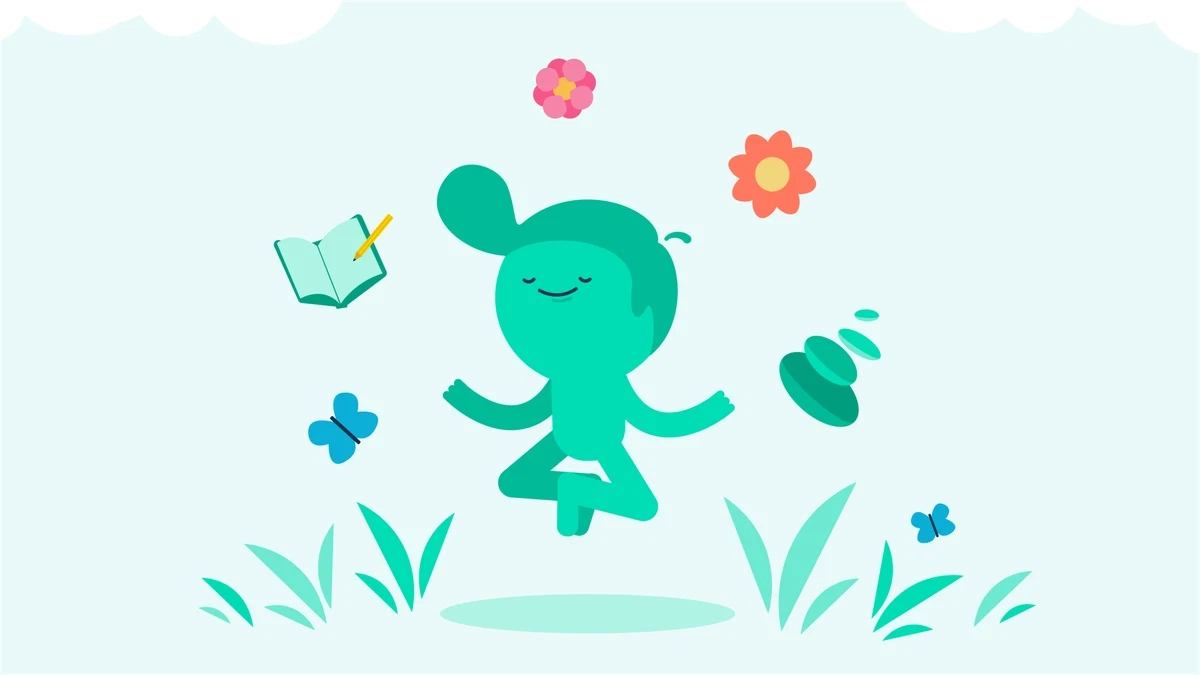This post may contain affiliate links. When you buy through links on our site, we may earn a small commission at no additional cost to you.
Ambivert – Definition and Meaning
Imagine the following situation: You’re on a crowded bus going to a music festival. It’s all fine and dandy except for one tiny detail: The seats on the left side are occupied by ominously quiet people, each of them stuck in a book, looking out the window, or pretending to sleep. On the right side, however, there’s an uproar of laughter, snacks are being passed around, someone is juggling empty bottles up in the front, and there’s overall jovial chatter. You realise you’ve boarded the introvert-extrovert binary bus, and, as an ambivert, you are right in the middle of the whole shebang.
Where would you sit? If you’re having trouble deciding, maybe the middle of the aisle is the right place to hang out – I mean, you don’t want to be driven mad by stony silence, but you also don’t want to be hit with one of those bottles.
Ambiverts are people who fall somewhere in the middle of the introvert-extrovert personality spectrum, and they are people who have qualities of both extremes. As such, ambiverts are flexible individuals who thrive both in solitude and company, and they make great communicators and listeners.
Introvert, Extrovert, Ambivert – A Quick Recap
The introvert-extrovert personality spectrum was developed by Carl Jung. He noticed that most people fall into one of these two broad categories. His idea was that people tend to draw energy from different settings: introverts prefer to be alone when they need to recharge, whereas extroverts get their energy boosts from being around people.
Ambiverts, in contrast, are right in the middle of that spectrum, finding ways to enjoy both social and solitary settings. They’re great at telling and listening to stories, and they are prone to processing information internally before deciding on any matter.
Ambiverts are sometimes also called social introverts or antisocial extroverts. Depending on the context, situation, and people involved, ambiverts can tune into any conversation, take the lead, and grab all the attention. However, they will also withdraw to recharge from social engagements.

Typical Traits of the Ambivert Personality
Now, as an ambivert, you know both of these sides well, but let’s take a look at what characteristics you, the typical ambivert, possess:
- You are a good listener and communicator, which makes you an excellent shoulder to cry on (as well as a source of tough love once it’s needed). Where introverts might hold their judgement back out of tact, you’re more likely to speak your mind (tactfully, of course). On the other hand, you’re great at discussions and debates and can present your arguments with aplomb.
- You are a great peacemaker. When things get heated, ambiverts tend to fall back on reason and collect their emotions faster than other types before bringing peace to everyone involved. You also boast some pretty neat negotiation and leadership skills as you can relate to most people on various levels.
- You can regulate your own behaviour. If humans could be like the Sims, i.e. customisable, you’d be it. You can adjust to different personality types and bring out the best in them, and you appreciate the variety of traits people have.
- You are highly empathetic. Related to the previous point, you can also put yourself in nearly everyone’s shoes. For instance, an introvert would see an extrovert lifestyle as their worst nightmare, but you can understand both and even strike a fine balance in behaviour to accommodate the two extremes.
- You are loyal. Ambiverts are devoted to those they care for and would do anything to keep them happy.
- You are a team player (once you’ve had some time to sift through your own ideas). This is a good combination for any group project as you are good at quickly assessing information and reaching your own conclusions. You’re also capable of assuming leadership and guiding others towards a common goal.
Relish These Ambivert Qualities
As an ambivert, you’re one of those rare gems who can hear and speak to a large part of society. In order to get the most out of your qualities, you might want to find ways to harness your personality and become your best self while bringing out the best in others. Here are a few ideas:
Assume Leadership
As we’ve already mentioned, ambiverts are great leaders. To bring out this quality, you should actively seek situations where you can get hands-on experience and practice. For example, you can join a student group known for organising events and parties and volunteer to take over some duties.
AEGEE Europe has its antennas in every major city, usually connected to the university there. If your city has none, you can check out how to start a new branch. As an AEGEEan, you’ll organise summer and winter universities open to international students.
World Strides is a student-governed travel organisation that provides exciting trips and events. You can join the party and take some responsibility by writing up out-of-the-box itineraries or acting as a tour guide.
As a successful leader, you should nourish your relationships with others, be it on a one-on-one basis or through team-building events. Make sure you get to know everyone’s names and actively listen to your peers when they want to share their ideas and suggestions with you. Remember, as a leader, your job is to motivate others, not boss them around. Luckily, ambiverts are great at this, so listen to your gut feeling, engage your teammates in ways that they would also find appealing, and don’t forget to keep your eyes on the target.

Ambivert Empathy
Ambiverts are, at times, almost like social chameleons. You can tune into people’s emotions, spot small body language cues, and read the room to adjust your behaviour to various circumstances and personalities. Which is great, as far as I’m concerned! Being empathetic is a sign of great emotional intelligence and should be appreciated. To boost your empathy, make sure you’re taking good care of yourself. Listen to your body and mind – when you need silence, take a moment to meditate, or if you’re feeling the call of a cheesy movie on Netflix, watch it. Listen to your gut feeling when you’re on your own so that you can recognise its tugs when you’re with others.
Reading literary fiction is a proven way to boost empathy. Literature provides plenty of new perspectives and experiences, and by reading and acknowledging the emotions of fictional characters, you can grasp and understand greater depths of emotion in people around you. Find a novel you can immerse yourself in – it can be any genre you like. If you’re not a big reader, maybe you haven’t found the right book yet, so start easy with some nice thrillers or classics like Pride and Prejudice and feel the call of the written word.
Ambivert vs Omnivert – Negotiating the Extremes
Ambiverts are not the only ones who balance extroversion and introversion well – their counterparts are called omniverts. Omniverts are somewhat more erratic in their behaviour, though. Here are some key differences:
- Ambiverts adjust to social situations as needed. In contrast, omniverts tend to be sociable when internally motivated. Therefore, when they need silence and solitude, they will gladly disappear off the radar and re-join the world on their own terms with a burst of extroversion. On the other hand, ambiverts are more present and not as drastic in their interactions.
- Omniverts tend to experience more fluctuating emotions than ambiverts on a shorter, nearly daily basis. One day they’ll be the life of the party, and the next impossible to reach via any normal means of communications (we haven’t tried ravens yet). Ambiverts, in turn, are more stable and live on a sustained set of emotions, be they leaning towards introversion or extroversion.
- Speaking of the two extremes, omniverts are also more likely to shift among different social groups, whereas ambiverts prefer to hang out with the same crowd. Additionally, ambiverts can participate in nearly any conversation and don’t find many topics difficult to handle. On the other hand, omniverts are more likely to drop any conversation they don’t find comfortable. The latter seems more aloof because of this, whereas ambiverts are perceived as more easy-going.
However, the most important thing to know is that regardless of whether you’re an ambivert or omnivert, you do well in various settings. Sometimes you may need to discipline yourself against disappearing when things get boring, but you should always mind your own happiness above all else.
An End to Our Ambivert Journey
So, after reading our posts on extrovert, introvert, and now ambivert (with a little bit of omnivert in the mix), which one are you?! Whichever it is, embrace it!
Ambivert is a personality type in the middle of the introvert-extrovert spectrum. Ambiverts draw energy from social settings and solitude and navigate both with ease.
Ambiverts are people who strike a fine balance between introversion and extroversion. They are excellent communicators and listeners, are highly empathetic, and make great leaders.
People usually cannot easily change their personality type. Still, if you would like to be more ambivert-like, work on your communication skills. Learn to listen actively and engage in social situations. Additionally, you could work on your skills like empathy and organisation to appear more like an ambivert.
How we ensure our content is accurate and trustworthy?
At StudySmarter, we have created a learning platform that serves millions of students. Meet the people who work hard to deliver fact based content as well as making sure it is verified.

Gabriel Freitas is an AI Engineer with a solid experience in software development, machine learning algorithms, and generative AI, including large language models’ (LLMs) applications. Graduated in Electrical Engineering at the University of São Paulo, he is currently pursuing an MSc in Computer Engineering at the University of Campinas, specializing in machine learning topics. Gabriel has a strong background in software engineering and has worked on projects involving computer vision, embedded AI, and LLM applications.
Get to know Gabriel




